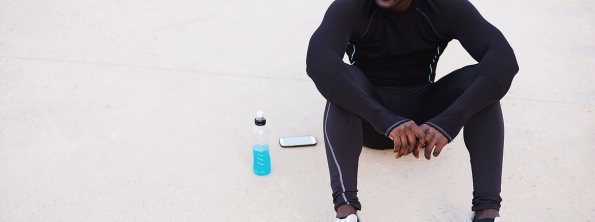YOUR PHYSIO
Condition directory
Patella Tendinopathy

What is patella tendinopathy?
Patella tendinopathy is exactly what it sounds like it should be – a pain problem of the patella tendon. Your patella tendon is the exceptionally important bit of tissue that joins your knee cap (patella) to your shin bone. It takes all the force from your quadriceps muscle and uses it to straighten your knee, hold your knee in a position against a load or gradually control leg bending when a load is trying to bend it quicker.
The pathology (the reason for the pain) that is present at the patella tendon is open for much debate at present. Certainly this used to be talked about as tendonitis – that is inflammation of the tendon. It is clear that inflammation is only present some of the time (usually in the early stages of the condition) and a different process, tendinopathy, is at work in persisting cases. Modern thinking on this subject suggests that it is due to a disturbance in the healthy balance that the tendon tries to maintain. All our body’s tissues are constantly going through a process of replenishment; old tissue is broken down and replaced with new tissue. Tendon is no different. It is generally thought that. When there is a mismatch in this process, when the balance is lost your body tries to deal with this by releasing chemicals. It is thought that amongst other things these chemicals lead to tendon pain.
It is commonly seen that 2 distinct sets of issues lead to the development of tendinopathy. However, for many years it has really only been the former that has been treated by most practitioners.
1. Problems with tendon loading:
Sudden changes in tendon loading. Such as starting to train at the beginning of a sports season or increasing your running quickly.
Sustained loading of the tendon. The archetypal overuse injury
(Bio) Mechanical reasons why the tendon is loaded more.
2. Problems with the health of the tendon
– how able is the tendon to maintain an equilibrium despite fluctuations in load. The
features below influence this:
Age
Genetics
Smoking status
General health and lifestyle factors
To find out more about the relationship between lifestyle and MSK health visit our article here.
What are the symptoms of patella tendinopathy?
Pain is the most common symptom of patella tendinopathy. This is usually seen localized very much to the tendon its self. Felt just below the kneecap at the front.
Pain is often worse on starting movement, such as getting up from a chair after sitting for a while. It can often feel better with activity, but will commonly eventually stop that activity due to pain.
If left unmanaged the pain can stop sporting activity all together.
The patella tendon is often very tender to touch. It can also become swollen. However, it does not usually lead to swelling of the knee joint as a whole, just local to the tendon. If your whole knee is swollen you may have another issue.
What can I do for myself?
1. Deload
If your symptoms have just come on because of a sudden increase in load, they are probably as a result of local inflammation within the tendon. They will usually settle within 6-12 weeks, as long as you are able to ‘deload’ the tendon. This essentially means not repeating the heavy activity again and again, and making sure you modify your day to day activities for a couple of weeks so they don’t cause excessive pain.
If your symptoms are due to constant exposure, then again you may want to ‘deload’. You can do this for example by modifying your sporting activities.
A useful technique to employ during this deloading phase is ‘relative rest’.
Relative rest refers to a technique where by you limit your activities based upon your symptoms.
To start with you have to rate your pain on a scale of 0 to 10 where 0 is no pain at all, and 10 the worst pain imaginable. The aim with relative rest is not to let you pain go anymore than 2 points up this scale with your day to day activities (i.e if your rest pain is 2 you should not provoke pain more than 4). This can mean cutting activities short or modifying how you do them for a short period of time. You should apply the principles of relative rest for a few weeks until the pain begins to settle.
If you think you are going to struggle with deloading because of the nature of your job, come and see us. There are other strategies we can employ to achieve deloading which we can teach you, but they do require a detailed face to face assessment.
2. Reload
If you completed the deloading phase or you think you have a tendon underuse problem the next thing to do is to gradually start exposing the tendon to load again.
Why do this? Because these strong amazing structures get their ability to cope with loading by exposure to it. The tendon needs to know in the long term what the normal demand on it is going to be and has to relearn how to cope with this. Once the tendon has ‘settled down’ you can start this gradual education.
The best place to start is with contractions of the muscle and tendon within a limited range of movement.. These have been shown to reduce short term pain (so are good for self administering pain relief) and help to prepare the tendon for beginning to accept loading through movement. The exercise below is a good starting point:
If your symptoms are not settling despite relative rest and reactivation, speak to your GP about an MSK referral or refer yourself here.